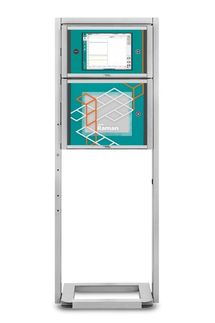To use all functions of this page, please activate cookies in your browser.
my.bionity.com
With an accout for my.bionity.com you can always see everything at a glance – and you can configure your own website and individual newsletter.
- My watch list
- My saved searches
- My saved topics
- My newsletter
Mucolipidosis type IV
Mucolipidosis type IV (ML IV), like other types of mucolipidosis is an inherited neurodegenerative lysosomal storage disorder. Patients with this autosomal recessive disorder have symptoms including delayed psychomotor development and various ocular aberrations. This type of mucolipidosis is caused by mutation of a non-selective cation channel, TRPML1. These mutations disrupt lysosomal storage and lead to neurodegeneration through an unknown mechanism. Product highlight
Symptoms and SignsMost patients with ML IV show psychomotor retardation (i.e., delayed development of movement and coordination), corneal opacity, retinal degeneration and other ophthalmological abnormalities. Other symptoms include agenesis of the corpus callosum, iron deficiency, and improper stomach pH (achlorhydria). Achlorhydria in these patients results in an increase in blood gastrin levels. These symptoms typically manifest early in life (within the first year) and progress slowly. PathophysiologyML IV is caused by mutations in the cation channel TRPML1 (Mucolipin-1). TRPML1 is localized in endosomes and may function as either a proton leak channel and/or aid in the regulation of calcium levels. An important property of TRPML1 is that decreasing pH (acidification) results in deactivation of the protein, likely through an assembly defect. There are 10 mutations in TRPML1, located throughout the channel. Three of these mutations (Q79X, R102X and R172X) result in early truncation of the channels and the loss of functional protein. The other seven mutations result in either amino acid substitution or deletion. Of these, V446I and ΔF408 are known to be functional as channels. In these mutants, however, there is no acidification induced defect in assembly. These alterations result in the blockage of endocytic transport and prevention of lysosome formation. Over-acidification of these organelles may result in decreased lipase activity. This decreased lipase activity might then result in the increased levels of lipids and membraneous materials seen in patients. Alternatively, build-up of intra-compartmental calcium may prevent the fusion processes in these organelles. Treatment/ManagementSee the equivalent section in the main mucolipidosis article. EpidemiologyAshkenazi Jews have a high carrier frequency of 1:90 to 1:100. References
Categories: Metabolic disorders | Lysosomal storage diseases | Channelopathy |
||||||||||
| This article is licensed under the GNU Free Documentation License. It uses material from the Wikipedia article "Mucolipidosis_type_IV". A list of authors is available in Wikipedia. | ||||||||||
- AgiLab SAS - Paris, France
- Category:Defensive_cells
- Integrated DNA Technologies, BVBA - Löwen, Bélgica
- Frost & Sullivan anticipates large-scale switch to digital pathology systems - Ability to tackle escalating workloads and reduce costs underlines appeal
- Fighting blindness: A key protein brought into focus







